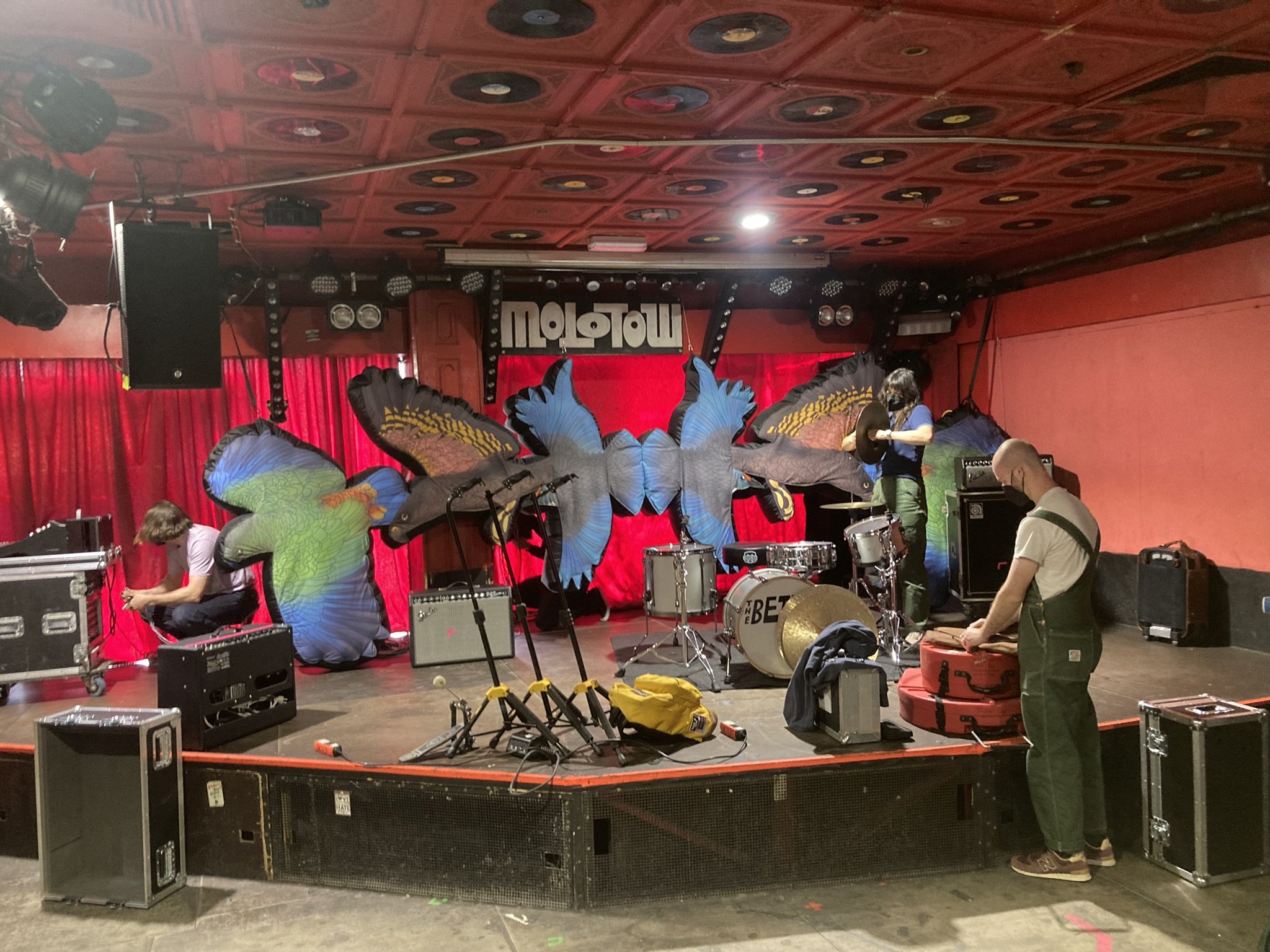Day 21: Hamburg
Welcome
Yesterday we returned to Germany for our show in Hamburg.
The hotel breakfast was provided by a café across the road from our lodgings. We arrived there to find a generous spread laid out on the countertop from which I served up a plate with brown bread, a sourdough bread-roll, salami, cheese, tomato salad, an egg, and a smear of houmous. Alongside this I enjoyed a small jar of fresh melon with a mint garnish and a lemon dressing.
Jonathan was in the driver’s seat as we left Copenhagen heading West on the E20 highway that crosses the breadth of Zealand. Morale was high in the van as we knew that it would soon be time for arguably the most exciting moment of the tour, driving the Storebæltsforbindelsen (Great Belt Fixed Link ) [4.4 stars from 4,084 reviews], the crossing between islands of Zealand and Funen. I have written about this impressive piece of infrastructure before but just so you don’t have to scroll back and find the old blog entry I’ll give a quick run down again. The fixed link is comprised of a road suspension bridge and a railway tunnel that connect Zealand to the tiny island of Sprogø in the middle of the Great Belt Strait, from where a 6km box girder bridge carries both the road and rail traffic the rest of the way to Funen. The suspension bridge is an impressive structure whose 1,624 metre main span provides 65 metres of vertical clearance – enough for the world’s largest cruise ships to pass below.
One of the 83cm diameter, 3km long cables, comprised of 18,648 5.38mm wires wrapped in steel and treated to prevent rust. There is also a dehumidification system that blows dry air through the cables to remove any moisture.
Safely ashore after the 18km crossing we continued Westward across the island of Funen and then crossed the Lillebælt to reach the Jutland Peninsula, the large landmass that juts North out of the top of Germany and forms the continental portion of Denmark. The E45 then took us South to Germany where we rode the Bundesautobahn 7 all the way to Hamburg.
All hands on deck for the petrol refueling.
Molotow is a famous music club in Hamburg’s St Pauli district that was founded in 1990 and since then has played host to countless local and international acts from a diverse range of styles. We arrived a bit late after a long battle with Autobahn traffic and had to rush through our soundcheck but our teamwork and relentless positivity enabled us to achieve a good result.
The club felt full when we played and it was a good feeling. We received some positive feedback on our banter from a few audience members who felt that we had a Flight of The Concordes vibe. Cherym played a tight set and by the end were completely adored by everyone in the room.
In reply to the many inquiries I have received about the condition of box 1:
I am pleased to convey that it is holding together well and still performing it’s function as the primary carrier of black t-shirts. Box 3 did suffer a partial failure on one of the vertical seams but it was fairly easy to patch up using the usual masking tape + clear packing tape.
I snuck in a quick walk before the show and got to see a few interesting landmarks. The first was Beatles-Platz, a square built in 2008 to commemorate Hamburg’s importance in The Beatles’ history. The square is actually circular and resembles a large LP while there are five statues that represent the Beatles members who played with the band during their time in Hamburg - George Harrison, John Lennon, Paul McCartney, Stuart Sutcliffe, and a hybrid stature of drummers Pete Best and Ringo Starr.
A striking sight in the Northern part of the St Pauli district is Flaksturm IV, a steel-reinforced concrete anti-aircraft bunker, 75m square and 38m high with 3.5m thick walls and a 5m thick roof. It was built in 1942 by 1000 forced labourers and used throughout WW2 both as a platform for a large number of anti-aircraft guns and a bunker where up to 20,000 civilians could take shelter from Allied air raids. Like the flak tower I visited in Vienna the demolition of this structure was considered impractical and over the years it served as living space as well as a cold war bomb shelter. In the 1990s it was sold and converted into a media centre which housed a nightclub and a music store and a pop music school, while currently there are plans for a concert hall and a huge rooftop garden.
Visible from almost anywhere in the city the Heinrich Herz Tower is Hamburg’s tallest structure. It was built between 1965-68 as a radio telecommunications tower for the German Federal Post and Telecommunications Agency but also featured an observation floor and a restaurant, both of which are sadly now closed to the public due to high asbestos levels. With an overall height of 280 metres the Heinrich Hertz-Turm is an impressive sight and it’s six concentric disk-shaped platforms host an array of high gain directional microwave relay antennas that broadcast numerous FM, digital radio, and digital TV channels. Like Auckland’s Sky Tower the lower shaft is constructed of steel reinforced concrete with a high speed elevator shaft providing access to the upper platforms, however the 1,100 steel steps of the Hertz Tower fall slightly short of the Sky Tower’s 1,267.












